Monsoon season in Arizona is a time of waiting and watching. Waiting for rain is like playing the lottery. Your odds improve after the 4th of July, but it’s still a roller coaster of optimism and disappointment.
This morning dawns with haze and humidity, and by 8 am, the sun’s direct rays drill into my shoulders like a laser beam. Decisions—do I water the outside plants or not? For days, the thunderheads have played with us, marching toward Granite Dells like an invading army, rumbling ominously and trailing sheets of rain, only to dissipate upon arrival. They act as if it was all bluster, threat, intimidation, then shrug a rounded shoulder, “Just kidding!” . . . It’s hard not to take it personally.
As this morning proceeds, clouds come up fast, but not thunderhead; instead, a blanket of crumpled gray covers the heavens. The air feels heavy, oppressive. It’s raining to the northeast, where the armies often seem to stage before advancing across our valleys.
Late in the afternoon, I push away from the computer screen and step out on the deck—checking clouds again. Now they have taken on a multitude of shapes, layer upon layer, and shafts of light penetrate gaps in the formations to contrast strongly with the black bellies of monster thunderheads. How can what I am seeing be no more than water vapor? There is something exciting happening here and I must bear witness to it.
Grabbing my camera, I race from the house, seeking elevation on the granite outcrops nearby. These clouds look serious. Surely they will bring rain. Before my eyes, they are moving, not in synchrony but in gargantuan chaos. Individual swelling cumulus ram into each other or pull away as if repulsed. Towering columns of mashed potatoes swell, then fall apart. Sunlight rims ragged windows in the main mass that advances toward me from the west. It’s a light show on the dark side.
I am drawn toward one massive jumble of granite behind which an especially elegant thunderhead is rising. From the green line of cottonwoods along Granite Creek nearby comes a piercing scream, then another. A Zone-tailed Hawk, no doubt nesting there, is disturbed by my proximity. Tipping in the air like the Turkey Vultures it mimics, the hawk rises above me, still screaming, circling on thermals, silhouetted against blue, then white, then black, then blue again.
A fragment of rainbow appears in one cloud to the northeast. The fleet of small clouds to the south coalesces into one massive tanker, a leaking one, at that. The heart of one cloud to the west has turned the deep blue of an Antarctic glacier. Other clouds are spitting fire in the form of jagged streaks of lightning. Standing atop the rocks, I feel as if I am in the midst of some great cosmic battle, and the thought of the advancing lightning gives me pause. Yet I cannot give up my front-row seat on this evolving drama in the heavens.
Just when it becomes darkest, the nighthawks take to the air. Dozens of them glide in erratic patterns, occasionally calling their nasal peents. I expected to be soaked by now, but the veils of rain that I can see here and there are all on the edges of the stage.
And then the sun finally slips below the clouds, sending golden light to strike the dramatic peaks behind me. I am overwhelmed with the beauty. A car pulls up near me, and a man jumps out, snapping photos with his wife’s phone (I never thought I’d see the day when you could do more than listen to or talk into a phone). His accent confirms his statement that he’s from Long Island, where he claims the sunsets are beautiful, though nothing like this.
The breeze has now disappeared, allowing mosquito squadrons to attack, so I retreat to my house, still filled with awe. I close the screen door, and a blinding light flashes, followed almost instantly by the boom of thunder. And then it begins, gentle at first, crescendoing into a downpour—the rain at last.

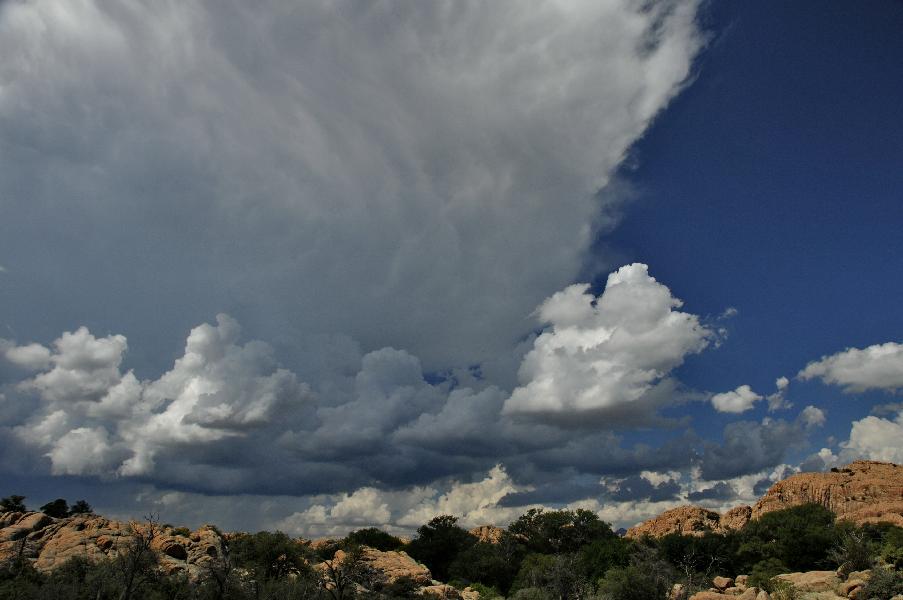
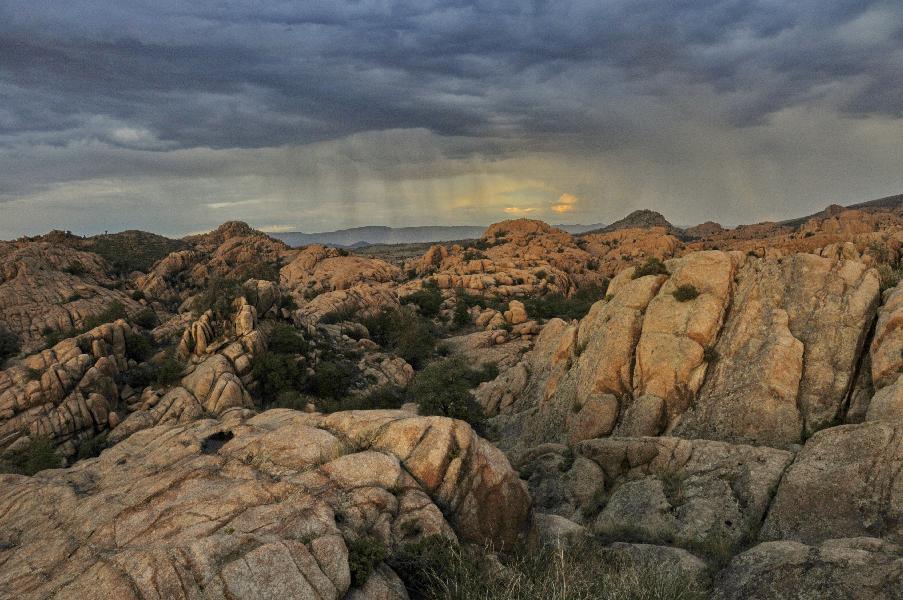
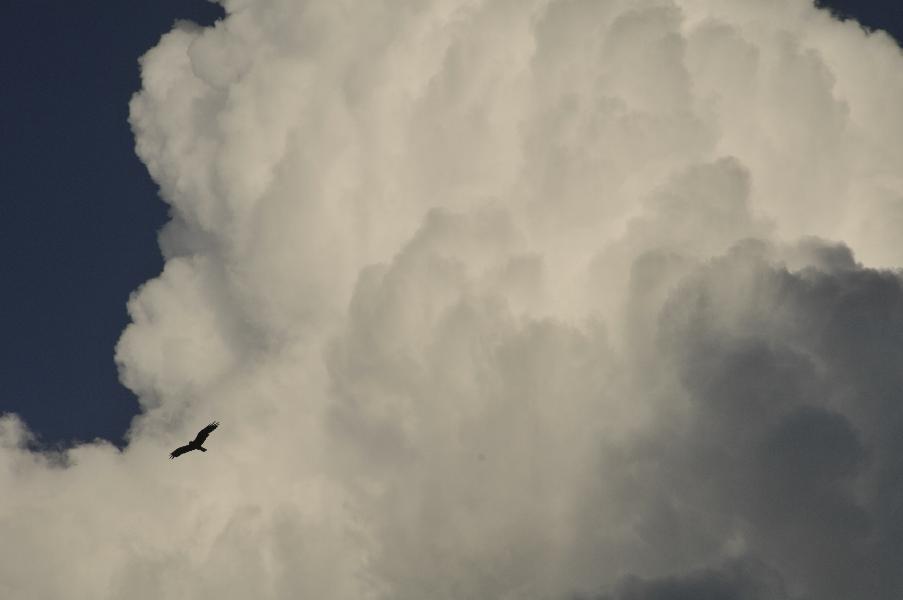
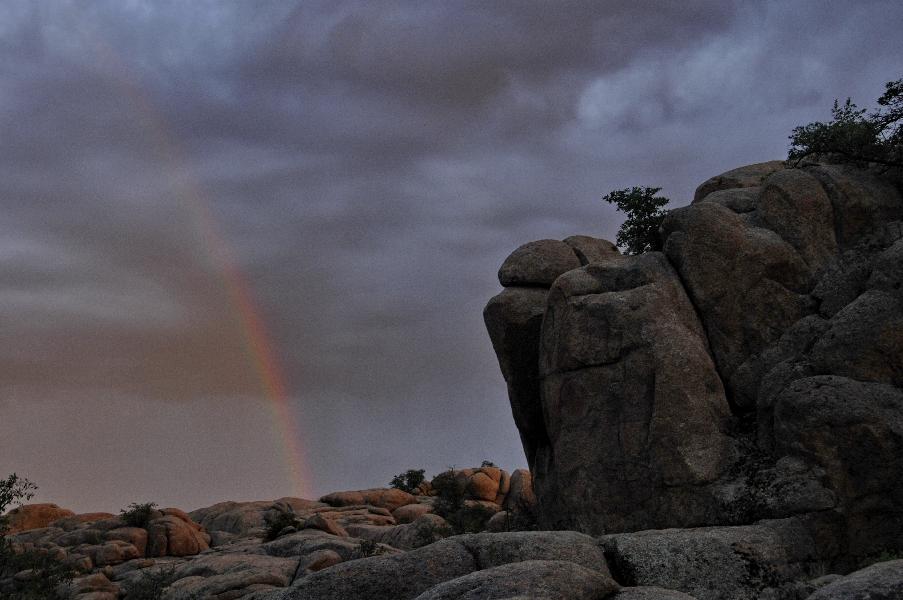
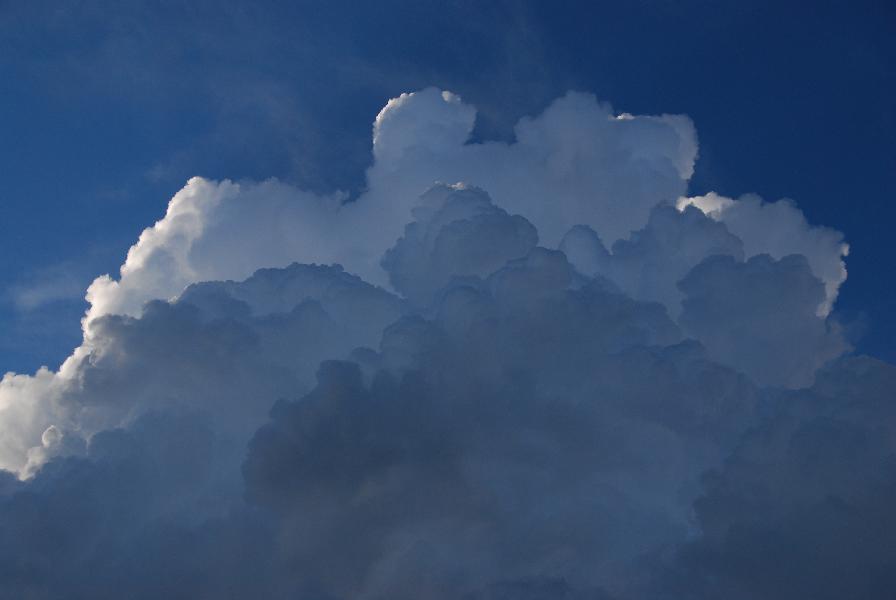
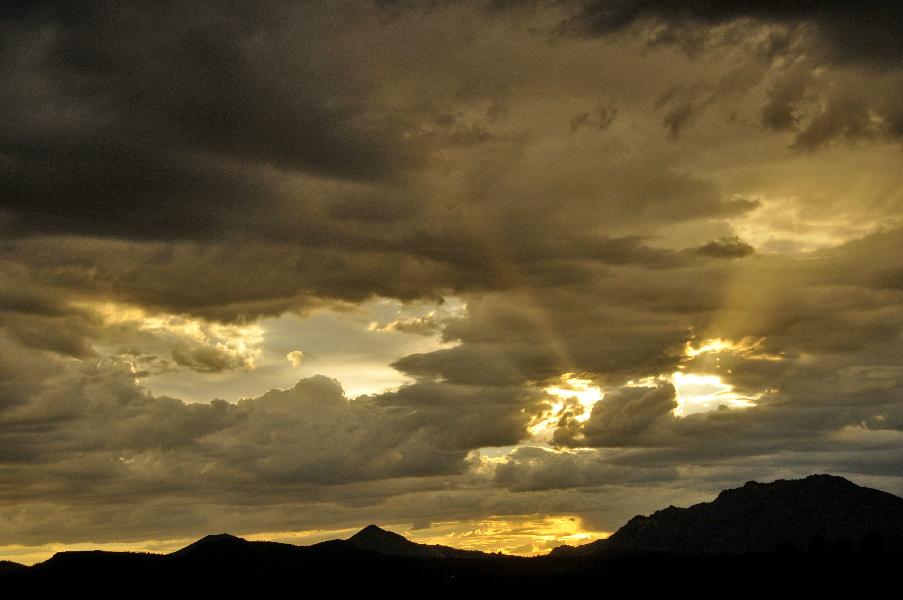
Wow. I love the Arizona sky, especially during monsoon season. Your images evoke deep emotions, Walt.
Thanks, Paul. You are a fellow weather-follower, and we are blessed with a planet that gives us many amazing phenomena. Today (9/13) was our best rain yet this season. Of course, I was out on Watson Lake teaching Wetland Ecology & Management, but we achieved our goals before it got too wet.
Ahhh, clouds. I watch them myself so much, and wonder at them. And of course sometimes I plead with them. We are so at the mercy of their whims! These are lovely Walt, as are your words
Thanks, Nichole. You are certainly part of my target audience, as I know you see the world with similar eyes. I suspect you’ll relate to the first essay, “I am a Naturalist.” I trust you are getting reacquainted now with your land in New Mexico. I look forward to hearing some stories from there!